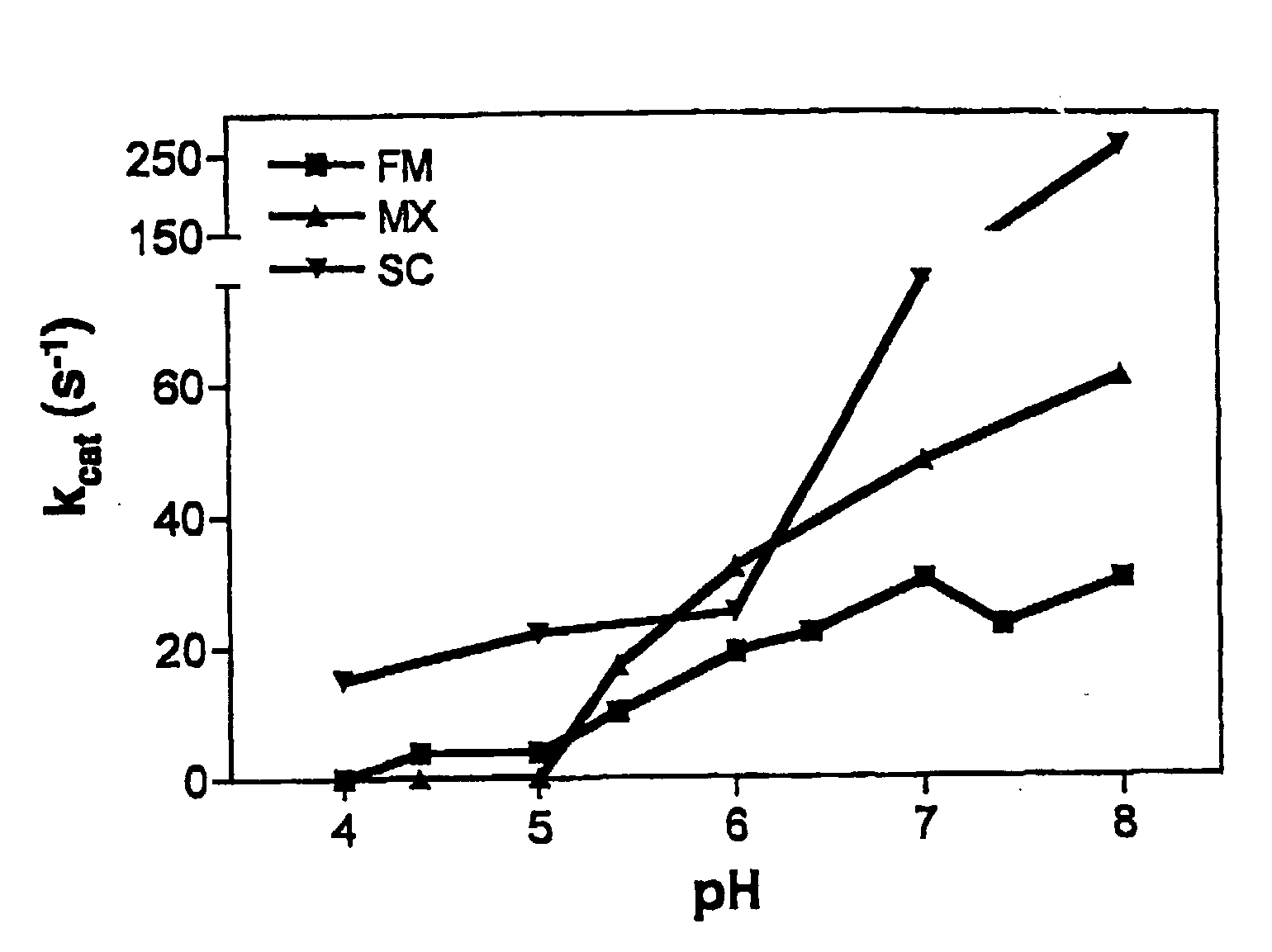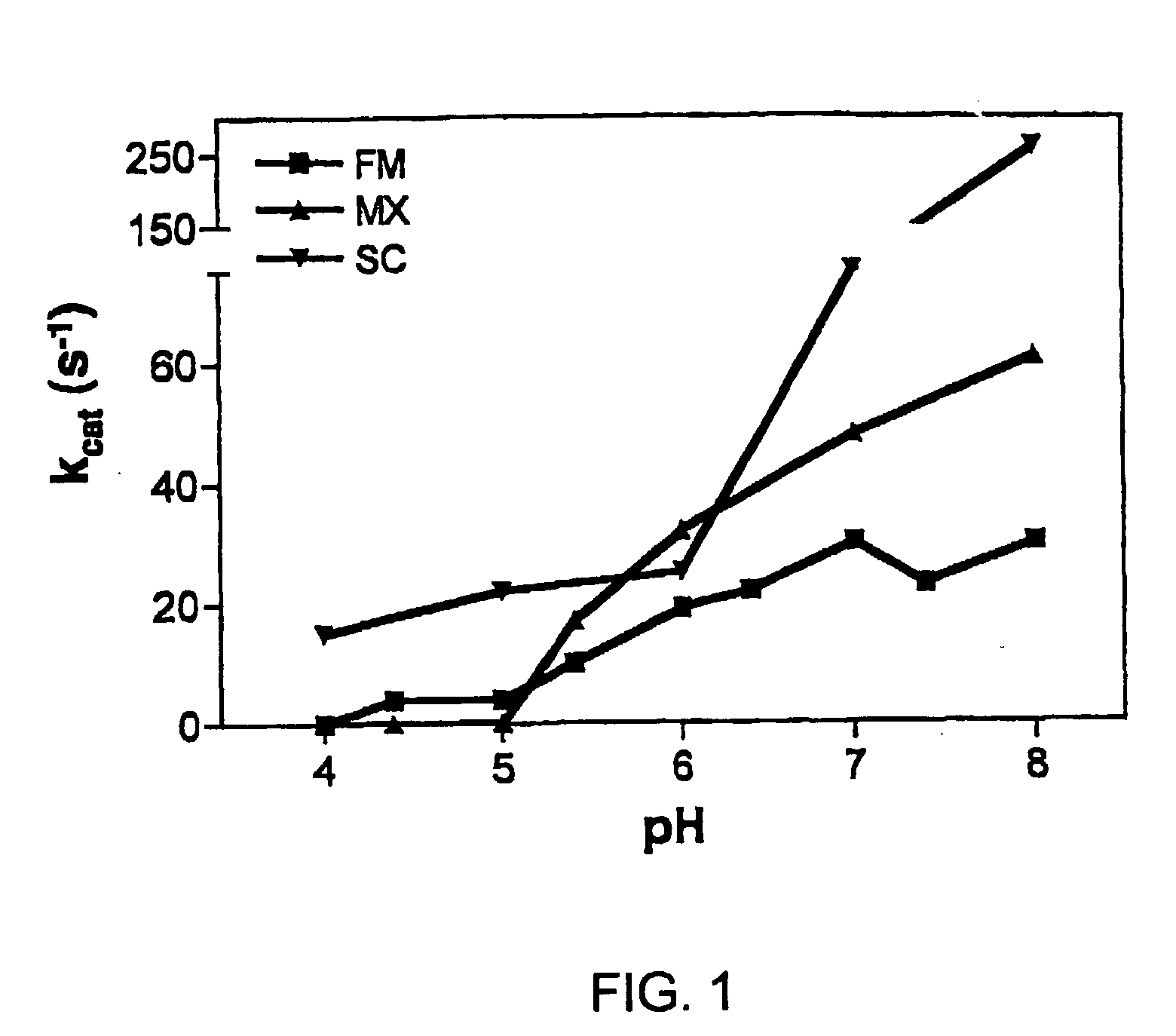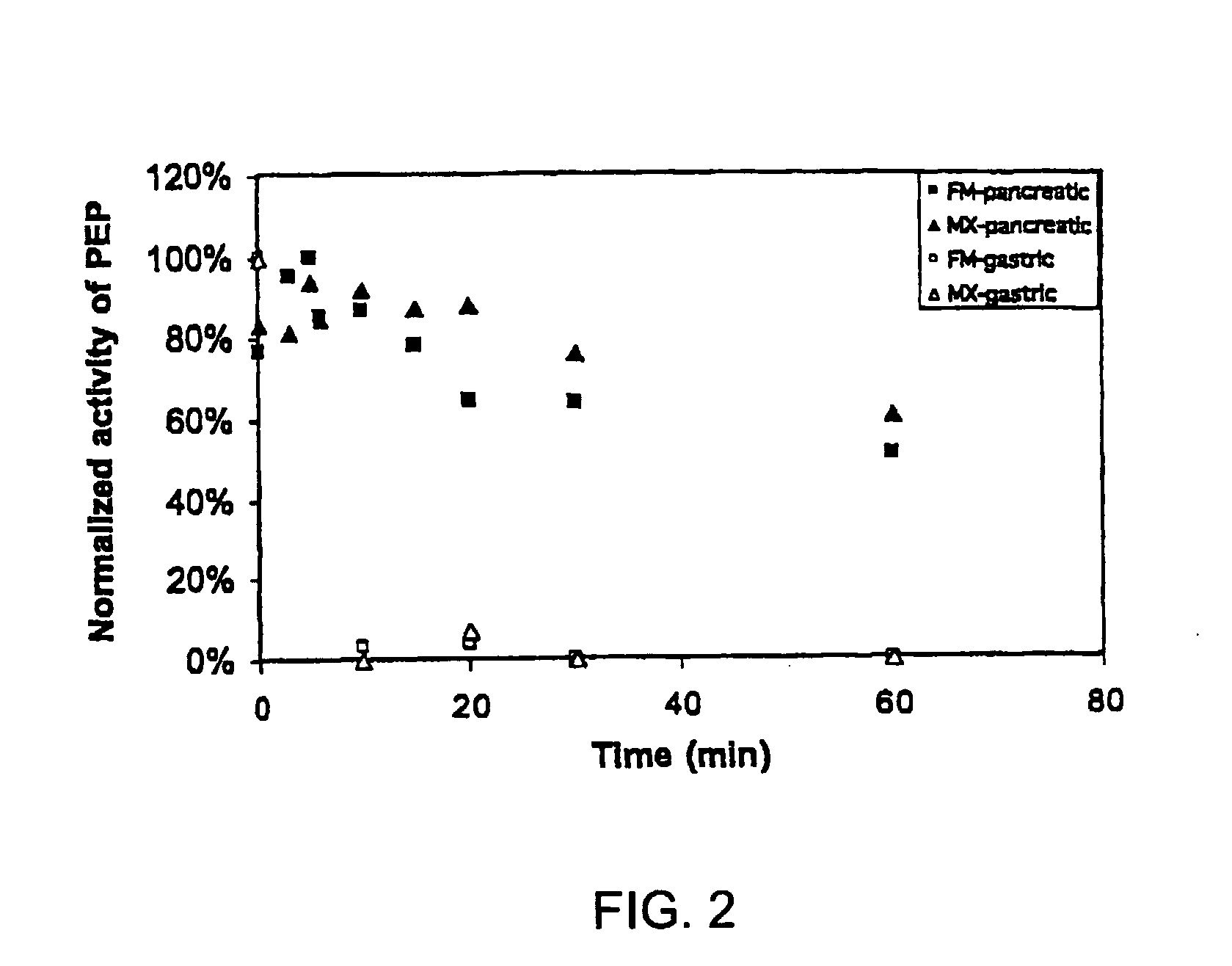Therapeutic Enzyme Formulations And Uses Thereof
a technology of enzymes and formulations, applied in the field of therapeutic enzyme formulations, can solve the problems of no good treatment for eczema, few patients respond poorly or not at all, and the diagnosis of eczema is erroneous, so as to prevent or relieve the toxic effects of eczema, reduce the level of toxic gluten oligopeptides, and reduce the effect of toxic effects
- Summary
- Abstract
- Description
- Claims
- Application Information
AI Technical Summary
Benefits of technology
Problems solved by technology
Method used
Image
Examples
example 1
Comparison of PEP Activities
[0093]To gain insight into the similarities and differences between naturally occurring prolyl endopeptidases, we have systematically compared the properties of three homologous PEPs from different bacterial sources. Our studies have utilized two known recombinant PEPs from Flavobacterium meningosepticum (FM) and Sphingomonas capsulata (SC), respectively, and a novel PEP from Myxococcus xanthus (MX) that we have expressed for the first time as a heterologous recombinant protein. The enzymatic activities of these PEPs were quantitatively analyzed versus model substrates as well as two gluten-derived peptides with potential relevance to Celiac Sprue pathogenesis. In particular, we have probed the influence of substrate chain length, pH, pancreatic proteases and intestinal brush border peptidases on the activity of each PEP. Both in vivo and ex vivo experiments were performed as part of these studies.
Experimental Procedures
[0094]Cloning of PEP Genes. The PEP...
example 2
Heterologous Expression of PEP in Lactobacilli
[0125]In one embodiment of the present invention, a Celiac Sprue patient is provided with a recombinant organism modified to express a PEP of the invention. The recombinant organism is selected from those organisms that can colonize the intestinal mucosa without detriment to the patient, thereby providing an endogenous source of PEP to the patient. As one example, Lactobacilli such as L. casei and L. plantarium can colonize the intestinal mucosa and secrete PEP enzymes locally. Given their widespread use in food processing, they can also be used as an efficient source of PEP for industrial (to treat foodstuffs) and medical (to prepare PEP for pharmaceutical formulation) use. PEPs are expressed in such lactobacilli using standard recombinant DNA technologies. For example, Shaw et al. (Shaw, D M, Gaerthe, B; Leer, R J, Van der Stap, J G M M, Smittenaar, C.; Den Bak-Glashouwer, Heijne, M J, Thole, J E R, Tielen F J, Pouwels, P H, Havenith,...
example 3
Heterologous Expression of PEP in Yeasts
[0126]Both naturally occurring and recombinant cells and organisms are used to produce the glutenases useful in practice of the present invention. Preferred glutenases and producing cells include those from organisms known to be Generally Regarded as Safe, such as Flavobacterium, Aeromonas, Sphingomonas, Lactobacillus, Aspergillus, Xanthomonas, Pyrococcus, Bacillus and Streptomyces. Extracellular glutenase enzymes may be obtained from microorganisms such as Aspergillus oryzae and Lactobacillus casei. Preferred cells include those that are already used in the preparation of foodstuffs but have been modified to express a glutenase useful in the practice of the present invention. As one example, yeast strains such as Saccharomyces cerevisiae are useful for high level expression of secreted heterologous proteins. Genes encoding any of the PEPs described above (mature protein only) are cloned in expression plasmids designed for optimal production o...
PUM
| Property | Measurement | Unit |
|---|---|---|
| concentration | aaaaa | aaaaa |
| pH | aaaaa | aaaaa |
| concentration | aaaaa | aaaaa |
Abstract
Description
Claims
Application Information
 Login to View More
Login to View More - R&D
- Intellectual Property
- Life Sciences
- Materials
- Tech Scout
- Unparalleled Data Quality
- Higher Quality Content
- 60% Fewer Hallucinations
Browse by: Latest US Patents, China's latest patents, Technical Efficacy Thesaurus, Application Domain, Technology Topic, Popular Technical Reports.
© 2025 PatSnap. All rights reserved.Legal|Privacy policy|Modern Slavery Act Transparency Statement|Sitemap|About US| Contact US: help@patsnap.com



